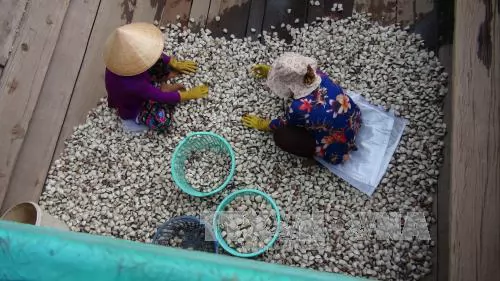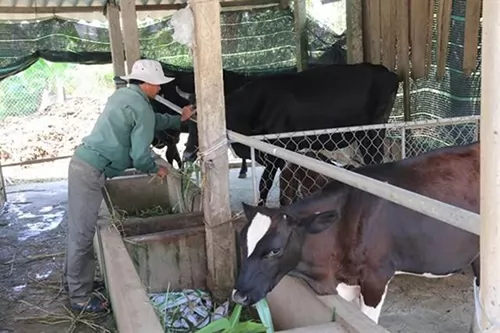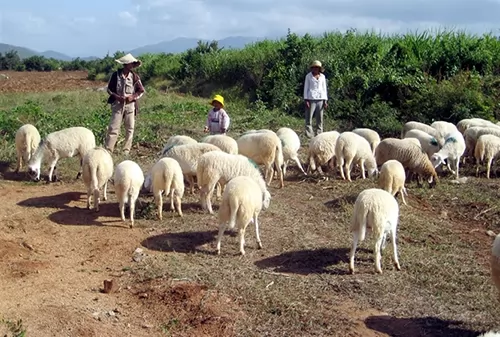Farmers see higher profits from sustainable shrimp–rice farming model

The yield of shrimp under Cà Mau Province’s shrimp–rice farming model has increased year by year.– Photo baocamau.com.vn
Viet Nam News / HCM CITY – The shrimp-rice farming model in Cà Mau Province, the largest shrimp producer in the Mekong Delta, has offered a stable income for farmers.
Both rice and shrimp produced under the model are “clean” as farmers use less chemicals to grow rice and the shrimp eat natural food in the fields.
Farmers in the province rotate the breeding of black-tiger shrimp during the dry season and rice cultivation on the same fields during the rainy season.
They also intercrop the breeding of giant blue-legged prawns with cultivation of rice on their fields.
The province has more than 51,500ha of shrimp-rice farms, accounting for nearly 18 per cent of its brackish-shrimp breeding areas. They are located mostly in Thới Bình, U Minh, Trần Văn Thời and Cái Nước districts and Cà Mau City.
“Shrimp-rice farming has provided stable, sustainable production for farmers here, offering profits of nearly VNĐ100 million (US$4,400) a year," said Trần Văn Phước, of Thới Bình District’s Biển Bạch Đông Commune.
Thới Bình District, which has the largest shrimp-rice farming area in Cà Mau, has more than 21,000ha of shrimp-rice farms, according to the district’s Agriculture and Rural Development Bureau.
Carried out in the province since 2000, the shrimp-rice farming model is considered one of the most effective farming models.
The average yield of rice under the shrimp-rice farming model is 4 tonnes per ha per crop, 300 kilos of black tiger shrimp per ha per crop, and 200 kilos of giant blue-legged prawns per ha per crop.
Lý Minh Vững, deputy chairman of the Thới Bình District People’s Committee, said the model is suited to climate change conditions.
Many farmers in the district are also working with companies to develop the shrimp-rice farming model.
Hồ Xuân Việt, secretary of the Bình Thới District Party Committee, said the district is building brand names for rice and shrimp as specific ecological products.
If there are stable outlets, the district will expand its shrimp-rice farming area to 31,000 ha in the future, he said.
Nguyễn Trần Thức, head of the province’s Sub-department of Plant Cultivation and Protection, said the sub-department has shown farmers how to produce clean rice and shrimp and choose quality rice seeds and shrimp fries. It has also provided them with information on integrated pest management.
The province has used rice varieties like ST 20, OM 6162, OM 5451, OM 4900 that are resistant to water with a salt content of up to 0.3 per cent to plant in the rice–shrimp farming areas.
Phạm Thanh Hải, head of the province’s Sub-department of Rural Development, said to ensure sustainable development, the co-operation of farmers, authorities, companies and scientists are needed to maintain the shrimp-rice model.
The establishment of co-operatives and co-operative teams is important for production and sales, he said.– VNS
Maybe you are interested

Trà Vinh to expand clam farming areas
TRÀ VINH — Trà Vinh Province plans to expand breeding clams on more than 15,000ha of alluvial grounds along coastal areas, with priority given to poor households, Phạm Minh Truyền, director of the province's Department of Agriculture and Rural Development, said.

Mekong Delta develops beef, dairy farming
Many provinces in the Mekong Delta have developed dairy and beef farming since it provides farmers with an additional income and benefits from local agricultural by-products.

Central regions seek drought-resistant animals
The Tây Nguyên (Central Highlands) and central regions are expanding areas to breed livestock as well as other animals like sheep, ostriches, goats, honeybees and silkworms.





